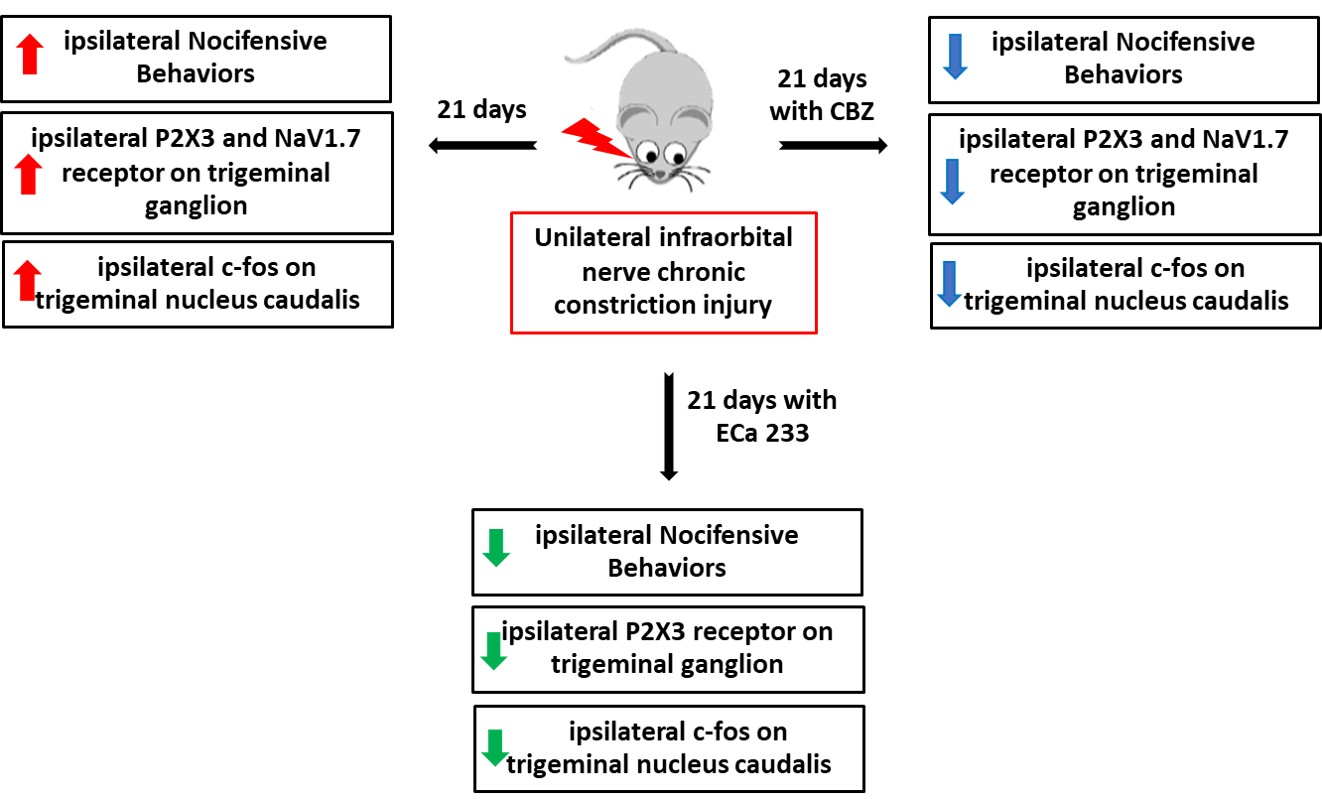Standardized Centella asiatica extract ECa 233 alleviates pain hypersensitivity by modulating P2X3 in trigeminal neuropathic pain
DOI:
https://doi.org/10.1590/1678-7757-2023-0337%20Keywords:
ECa 233, Infraorbital nerve chronic constriction, P2X3, NaV1, c-fosAbstract
During oral surgery and temporomandibular joint repositioning, pain hypersensitivity often occurs due to irritation or inflammation of the nerve endings in the orofacial region. Objective: This study aimed to investigate the effects of ECa 233, a Centella asiatica–standardized extract, on the development of mechanical hyperalgesia and allodynia induced by chronic constriction injury of the infraorbital nerve in mice. Methodology: The right infraorbital nerves of the mice were ligated. Oral carbamazepine (20 mg/kg) or ECa 233 (30, 100, or 300 mg/kg) was administered daily for 21 days. Von Frey and air-puff tests were performed on both sides of the whisker pad on days 0, 7, 14, and 21. Thereafter, the expression of purinergic receptor subtype 3 (P2X3) and voltage-gated sodium channel 1.7 (NaV1.7), a transmembrane protein, in the trigeminal ganglion and c-fos immunoreactivity-positive neurons in the trigeminal nucleus caudalis was assessed. Results: After 21 days of infraorbital nerve ligation, the mice showed allodynia- and hyperalgesia-like behavior, P2X3 and NaV1.7 were upregulated in the trigeminal ganglion, and nociceptive activity increased in the trigeminal nucleus caudalis. However, the oral administration of carbamazepine (20 mg/kg), ECa 233 (100 mg/kg), or ECa 233 (300 mg/kg) mitigated these effects. Nevertheless, ECa 233 failed to affect NaV1.7 protein expression. Conclusion: Carbamazepine and ECa 233 can prevent pain hypersensitivity in mice. Considering the side effects of the long-term use of carbamazepine, ECa 233 monotherapy or combined ECa 233 and carbamazepine therapy can be used as an alternative for regulating the development of hypersensitivity in trigeminal pain. However, further detailed clinical studies should be conducted to provide comprehensive information on the use of ECa 233.
Downloads

Downloads
Published
Versions
- 2024-03-25 (4)
- 2024-02-07 (3)
- 2024-02-07 (2)
- 2024-02-07 (1)
Issue
Section
License
Copyright (c) 2024 Journal of Applied Oral Science

This work is licensed under a Creative Commons Attribution 4.0 International License.
Todo o conteúdo do periódico, exceto onde está identificado, está licenciado sob uma Licença Creative Commons do tipo atribuição CC-BY.

